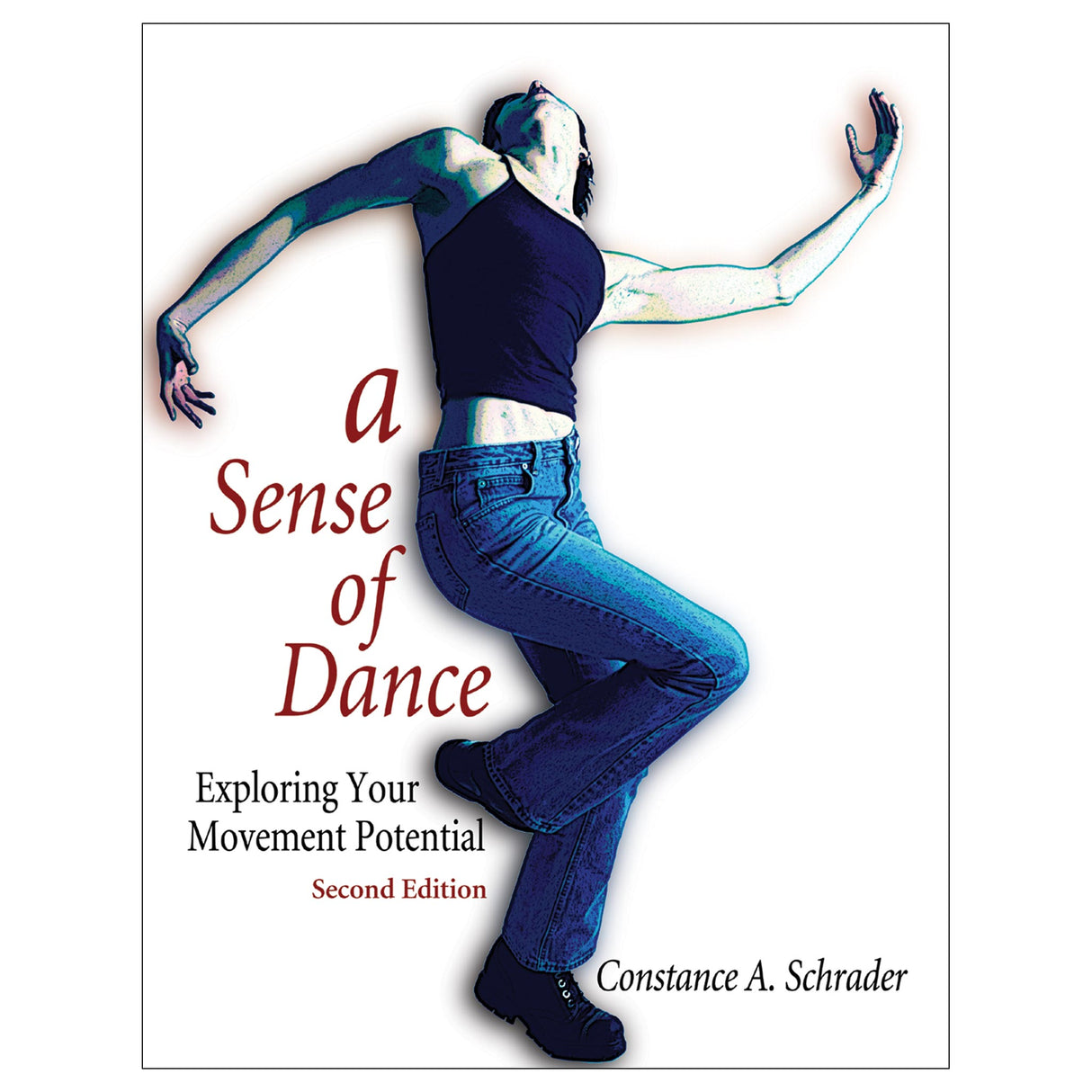Sense of Dance - 2nd Edition
Exploring Your Movement Potential
Author: Constance A. Schrader
$19.00 CAD
A Sense of Dance: Exploring Your Movement Potential, Second Edition, is written for true beginners—students who are exploring the art form for the first time and are not likely to describe themselves as dancers. Through this text, students discover that dance is an accessible art form that can bring greater self-awareness and self-confidence. It helps new dancers learn how to express themselves through dance.
This second edition, based on an already-successful textbook, features three new chapters that add even more depth to the topics covered. The chapters address the power of dance through time and place, culture, and community; a sense of style; and patterns of coordination.
Like the first edition, this empowering text uses an interactive approach to invite students to learn about dance through everyday experiences, personal observations, and guided experiences.
The following are some of the special elements in the text:
- “Inside Insights” encourage students to reflect on interesting observations that may affect their movement and expression.
-“Try This Experiment” exercises are guided physical explorations of concepts in the text that help students become more kinesthetically aware of their movements and discover new ways of moving.
-“Think About It” sections require students to reflect on how they can apply the information presented. These considerations provide good material for journal entries.
-“Your Turn to Dance” provides two opportunities per chapter for students to work in small groups to discover movement possibilities, solve problems, and hone their observation and evaluation skills. These become springboards for choreography that reinforces the concepts in the chapter—and provide another adventure of exploring movement potential.
The author uses a basic movement vocabulary that you can use to describe and evaluate movement possibilities, improve sensitivity when working in groups, develop critical-thinking skills, and express ideas and emotions through movement.
The book also contains these features designed to help students personalize and interact with the content:
-Short quizzes
-Highlight boxes
-Self-assessment exercises
-Updated, easy-reference index
Whatever your students' level of artistic awareness, this engaging text will inspire innovation and help you guide students in the discovery of their own creativity and sense of dance.
Audience
Textbook for beginning-level high school and college dance courses. Reference for middle school and high school dance specialists, physical education and adapted physical education teachers, dance educators, and arts education administrators and program directors.
Preface
Acknowledgments
Part I An Invitation to the Dance
Chapter 1 What Is Dance?
You Are Always Moving
To Dance Is Phenomenal
Talking About Dancing
Why Study Dance?
Think About It
Your Turn to Dance
Chapter 2 The Power of Dance
Why Dance?
Different Reasons Make Different Dances
Social Dances: Definitions and History
Ballet: Definitions and History
Modern Dance: Definitions and History
Jazz and Its Cousins, Tap and Musical Theater: Definitions and History
World Dance
Think About It
Your Turn to Dance
Chapter 3 How Do You Learn to Dance?
Learning to Dance and Learning About Dance
Fundamental Movement Experiences
What Does It Mean?
Training, Exploring, and Forming Your Own Style
Think About It
Your Turn to Dance
Chapter 4 Your Moving Body
The Body Is an Instrument
Moving Through Space
Space, Place, and Body Holds
Realizing the Potential of Your Instrument
Basic Anatomy
Accepting and Training Your Body
Think About It
Your Turn to Dance
Part II The Laws of (Loco) Motion
Chapter 5 The Elements of Dance
Dance Elements in Daily Life
Applying Elements to Dance Training and Choreography
Think About It
Your Turn to Dance
Chapter 6 Time
The Basics of Time
Using Time As a Choreographic Tool
Think About It
Your Turn to Dance
Chapter 7 Space
Level
Shape
Direction
Dimension
Perspective
Focus
Developing Interpersonal Spatial Awareness
Applying Spatial Awareness to Dance
Think About It
Your Turn to Dance
Chapter 8 Effort
Finding the Inner Impulse
There Is Effort in Every Human Movement
Forces That Affect Movement
Effort That Reflects These Forces
Integrating Inner and Outer Forces
Your Best Effort
Think About It
Your Turn to Dance
Part III The Sense of Movement
Chapter 9 Body Intelligence
Examining Intelligence
Body Intelligence
Development of Body Intelligence
Body Intelligence and Dance
Think About It
Your Turn to Dance
Chapter 10 Your Sense of Style
Patterns Make Sense
What Are We Looking at Here?
What's in a Name?
Toward a New Vocabulary of Style
Eastern Versus Western Style
Body–Mind Comes West
Think About It
Your Turn to Dance
Chapter 11 Patterns of Coordination and Style
Style and Cultural Code
Coordination Patterns Help Us Discuss Style
What's Your Home Base?
Patterns of Coordination Integrate Body With Mind
Think About It
Your Turn to Dance
Part IV The Politics of Dancing
Chapter 12 Making a Statement Through Dance
“Movement Resources I Have Known”
“Composition Strategies I Have Known”
Getting Started
Six Stages of the Creative Process
Think About It
Your Turn to Dance
Chapter 13 Composition
Function
Materials
Audience
Arranger or Composer?
The Discovery of Form
Principles of Composition
How to Make a Dance
Think About It
Your Turn to Dance
Chapter 14 Is This Dance Good?
The Creative Act
Words of Criticism
Recognizing, Interpreting, and Creating Relevance
What Does This Dance Have to Do With Me?
A Reporter's Evaluation
Is This a Good Dance?
Think About It
Your Turn...to Talk!
Photo Credits
Index
About the Author
ISBN 9780736055062
An instructor guide is available on CD-ROM. Each chapter contains an outline, summary, learning outcomes, key terms, test and review questions, ideas for facilitating “Your Turn to Dance” opportunities, and audiovisual references. The guide also includes an introduction, ideas for supporting writing and discussion, and 18 detailed improvisations and structures to use with your classes.





